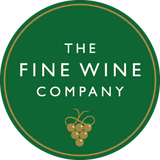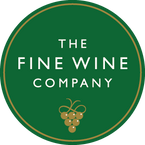Confused by all that fancy writing on the bottle? Don't worry. From grape varieties to regions and vintage years, understanding wine labels is the first step towards making confident choices.
Knowing how to read a wine label helps you pick a wine that matches your taste and occasion.
This guide will get you through the common elements on a wine bottle label, so you can shop with more ease and enjoy your wine to its best.
What Information Does a Wine Label Provide?
Wine labels carry important facts about the wine inside. Here is the usual information you will get to know:
• Producer or Winery: Who made the wine i.e. the Manufacturer.
• Wine Name or Brand: The label or series name.
• Grape variety (Varietal): The main type of grape used, like Cabernet Sauvignon or Merlot.
• Region or Appellation: Where the grapes were grown, such as Bordeaux or Napa Valley.
• Vintage Year: The year the grapes were harvested.
• Alcohol Content: Often displayed as a percentage by volume
• Quality Classification: In some countries, terms like AOC, DOC, or Reserve indicate quality standards.
• Volume: The amount of wine in the bottle, usually in milliliters.
Tip: Many labels also include tasting notes, awards, or certification symbols.
Key Terms Explained: What Do They Mean?
1. Grape Varietal vs. Blend
Some wines are labeled by their grape, for example, Cabernet Sauvignon or Rose wine. Other labels mention blends, like a Bordeaux blend listing Merlot and Cabernet Sauvignon. Knowing the difference helps you pick based on flavor.

2. Appellation and Region
Wine regions often shape the taste. For example, an English or French Champagne wine comes from the Champagne area using strict production rules. A Rose Sparkling Wine from Italy might be a Prosecco, offering lighter bubbles.
3. Vintage
This year indicates when the grapes were picked. Weather and climate variations affect each vintage’s character. Some wines develop better with age, while others are best enjoyed young.
How to Use Labels to Choose the Right Wine for Gifts and Occasions?
Wine isn’t just a drink; it’s an experience. Labels guide you in choosing the right bottle for the right moment:
• Casual sipping? Look for approachable varieties like Riesling, Sauvignon Blanc, or Merlot.
• Celebration? Sparkling wines like Prosecco for budget-friendly fun, Champagne for premium satisfaction.
• Summer party? Dry rose for its crispness and berry-fresh flavor.
• Milestones or corporate gifts? Reserve reds or vintage Champagne.
When selecting a bottle as a gift or for your own table, the label helps you:
• Pick a preferred sweet white wine or dry wine style.
• Find a bold red wine like Cabernet or smooth Merlot by comparing varietals.
• Choose bubbly celebrations with the best sparkling wine or consider Champagne wine for luxury.
• Check out for trendy wines like Rose sparkling wine for summer or parties.
If you want advice on pairing red wines with food, explore helpful tips comparing Cabernet Sauvignon and Merlot.
Tips for Beginners: Reading Labels with Confidence

• Look for familiar grape names or styles mentioned on the front label.
• Use the back label to find tasting notes or producer stories.
• Recognize simple quality terms like "reserve," "estate bottled," or "old vines".
• Check alcohol level: lighter wines are usually under 13%, bolder reds over 14%.
• Look for awards or certifications as extra assurance.
If you’re gifting wine, consider our guide for wine gift ideas for every budget to find wines everyone will appreciate.
Common Label Myths and Facts
• Myth: All wines must state grape varieties.
• Fact: Some traditional European wines list only regions, not grapes. Learning regions helps.
• Myth: A higher alcohol number means better wine.
• Fact: Alcohol relates to style, not quality. Balance matters more.
• Myth: Vintage year means the wine is better aged.
• Fact: Some wines are meant to be drunk young; vintage helps indicate style, not just age.
How Label Regulations Differ Worldwide
Wine labeling rules vary by country:
• Europe: Strict rules govern appellations; terms like AOC (France) or DOC (Italy) are quality marks.
• USA: Labels often highlight grape varieties and vineyards.
• Australia/New Zealand: Clear varieties and regions guide casual buyers.
• UK: Imported wines adopt their country of origin labeling standards.
Understanding these helps in buying imported wines confidently.
A Quick Guide Table: What to Look For on Labels Depending on Your Wine Preference
|
Wine Preference |
Label Key Indicators |
What to Expect |
|
Sweet White Wine |
"Sweet," varietals like Riesling, Moscato |
Fruity, light, aromatic |
|
Rose Wine |
Pink hue, "dry" or "off-dry" on label |
Fresh, crisp, berry flavors |
|
Red Wine |
Varietal names: Cabernet, Merlot, Shiraz |
Full-bodied, tannic or smooth |
|
Premium Wine |
"Reserve," region, vintage year |
High quality, often aged |
|
Sparkling Wine |
"Champagne," "Prosecco," "Cava," bubbles icon |
Effervescent, celebration drink |
Frequently Asked Questions (FAQs)
Q1: What does “Estate Bottled” mean on a wine label?
A: It means the winery grew the grapes, made, and bottled the wine on-site, usually a sign of quality control.
Q2: Can I trust “Reserve” on a label?
A: The term “Reserve” varies by country and producer and does not have a universal legal definition but often means better quality.
Q3: How do I know if a wine is sweet or dry just from the label?
A: Labels sometimes specify "sweet," "off-dry," or "dry." Varietals like Riesling can range, so check tasting notes if possible.
Q4: Are vintage years important when buying wine as a gift?
A: Yes, vintage reflects the year grapes were harvested, affecting taste and aging potential.
Q5: What is the difference between Champagne and sparkling wine?
A: Champagne comes only from France's Champagne region using traditional methods, while sparkling wine can be made worldwide.
Your Shortcut to Smart Wine Buying
Reading a wine label doesn’t have to feel like decoding a foreign language. Once you know the basics like grape, region, vintage, and style. You’ll feel more confident choosing a bottle that matches your taste, budget, or the occasion.
Labels aren’t just words; they’re guides to the story, quality, and character of the wine inside.
With a little practice, you’ll be able to walk into any store, pick up a bottle, and know exactly what to expect in your glass.
Want to put your new wine-label knowledge into practice?
Browse our collection at The Fine Wine Company where you’ll find hand-picked bottles from everyday sips to celebratory Champagnes all clearly labeled and easy to choose.
Make your next wine purchase simple and enjoyable.



